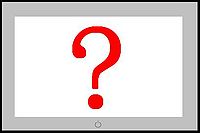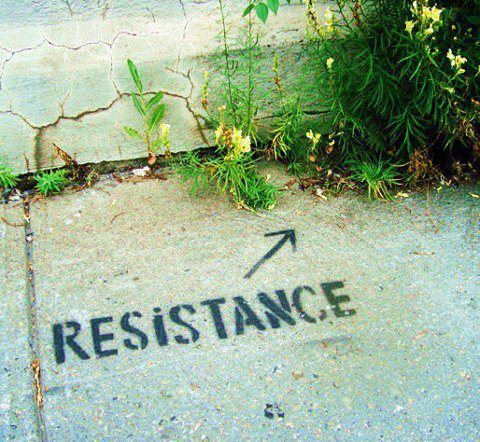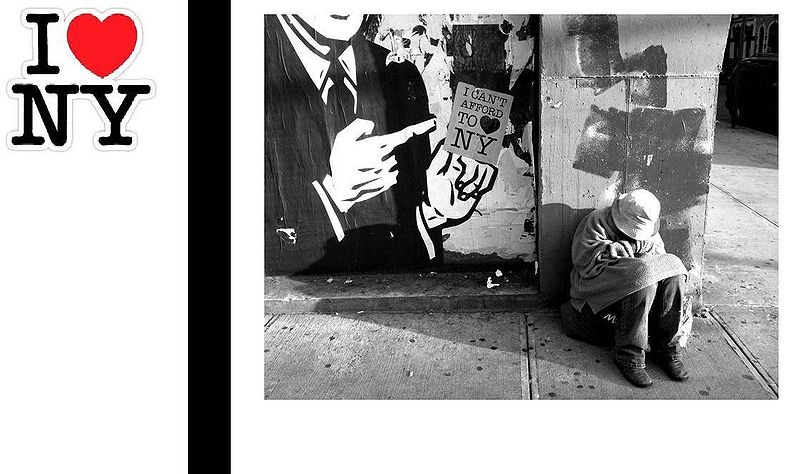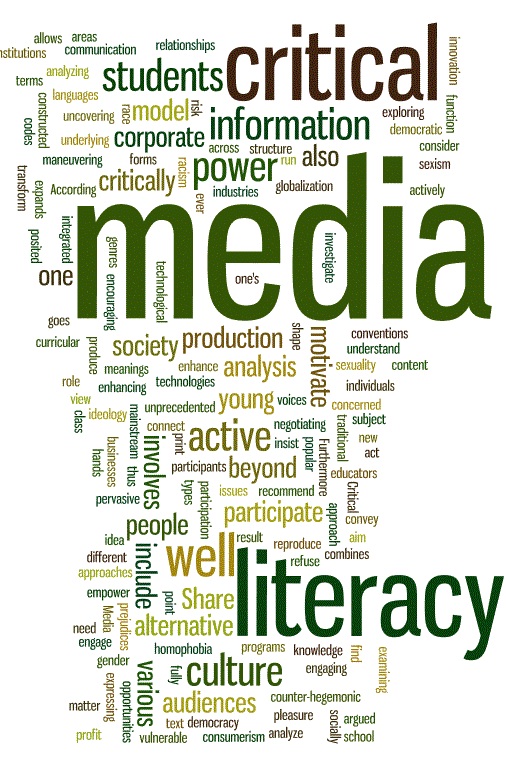Dec 9
|
Course: EDCP 333 Contemporary Issues in Social Studies Prof. E. Wayne Ross Authors: Ada, Raj, Colin, Phaidra, Jacee |
Introduction: What is Critical Media Literacy?[wikitext]

Critical media literacy is an integrated approach to media literacy that combines critical analysis of various types of media with media production. Its aim is to empower individuals to be active participants in society, the underlying idea being that literacy allows one to fully participate in, as well as shape and transform, one's society and culture, thus enhancing democratic participation. CML expands literacy beyond traditional print media to include different forms of media culture, information and communication technologies, and new media. And it goes beyond content analysis to investigate relationships between media and audiences, information and power. There are various approaches to media literacy, but the model that we are concerned with is the one posited by Kellner and Share (2007)[1].
According to this model, knowledge is socially constructed. CML involves exploring the languages, genres, codes, and conventions of a text so that students can understand how these function, as well as audiences' role in actively negotiating meanings. Furthermore, it involves uncovering & engaging issues of gender, race, class, sexuality, ideology, power, and pleasure, as well as examining the production and institutions that motivate and structure media industries as corporate profit-seeking businesses.
Kellner and Share's model places emphasis on action, as students not only critically analyze but also engage with the subject matter and act upon it to produce their own alternative media expressing their point of view. As a result, children/young people are seen as capable critics and revisers of culture, not as passive recipients or naive, agent-less individuals who need to be protected from popular culture and media.
The rationale behind CML is that we live in an age of unprecedented technological innovation and globalization. Media is more pervasive than ever before and the power in controlling information is not readily apparent. In this climate, young people are increasingly vulnerable to corporate maneuvering to the extent that democracy itself is at risk of being reduced to consumerism.
CML prevents the complacent acceptance of commercial media in truth-telling, and provides a way to find alternative viewpoints within a historical and sociological context.
In terms of school, Kellner and Share (2007)[2] insist that media literacy programs include critically analyzing how mainstream media reproduce racism, sexism, homophobia, and other prejudices, as well as encouraging students to find their own voices through alternative/counter-hegemonic media. They also recommend that critical media literacy run across curricular areas. Stack and Kelley (2006)[3] have argued that educators who refuse to consider popular culture as a curricular resource miss opportunities to connect with young people's lives and enhance critical literacy.
Wikis should include:
organized links to relevant teaching materials for the topic assigned, including multimedia resources such as sound, images, and video (to be embedded and/or linked to from the wiki);
Unit Plan: History 12: Turmoil and Tragedy- 1933 to 1945[wikitext]
Unit Plan: Turmoil and Tragedy, 1933-1945 History 12
Unit goals:
1. Teach students to consider how media can shape our understanding of the past.
2. To look at concepts of the Great Depression and the Second World War through a lens of critical media literacy.
3. Students should be able to compare primary and secondary sources and recognize bias, and reliability of the sources.
4. To help students establish and understand historical empathy through the study of WWII.
|
Lesson Plans: History 12: Turmoil and Tragedy- 1933 to 1945[wikitext]
Introduction to the Holocaust through Propaganda[wikitext]
In this lesson students will look at anti-Semitic propaganda use in Nazi Germany and compare it to anti-Japanese propaganda used in Canada and the USA. The purpose of this lesson is to show how racist dehumanizing propaganda was a tool commonly used by the bad guys and the good guys during WW2. The students will also look at some examples of what I believe is modern racist propaganda, and compare it to similar items from the past.
How and when can media create an atmosphere of hatred and what are the consequences
Nazi Germany 1933-1939[wikitext]
There are many opportunities in the Nazi Germany unit to cover critical media literacy and propaganda. For this lesson plan, the focus is on Leni Riefenstahl's Triumph of the Will and what students can learn about media and propaganda in the 1930's. The purpose of this lesson is to show students the various levels of messages a film can have. Triumph of the Will which documents the Nazi Party's Nuremberg rallies in 1934 is known as one of the best propaganda films of all time. In this lesson, students will learn about the types of messages that the filmmaker was trying to portray in the film and the techniques that she used to do so successfully. Furthermore, students will investigate Adolf Hitler's methods of propaganda in the rallies. There are many layers of techniques that the students must critically analyze the understand the effects of this piece of propaganda and be able to connect it to how media might be portrayed today. For the assessment at the end of the lesson, students will be required to write two letters that display their historical empathy and their understanding of the effects of the media. One letter will be from the perspective of a person attending one of the rallies and the other will be from the perspective of a German attending a viewing of the film in 1935 in a movie theatre in Nazi Germany.
Lesson Plan on Leni Riefenstahl's Triumph of the Will
The Great Depression in Global Perspectives[wikitext]
In this lesson, students will view a counter-narrative of the causes of Great Depression and Second World War as deliberately planned and executed by elite bankers for the sake of profit. By viewing a alternative and sensationalized version of this history, students may begin to understand the practice of identifying subtext in social studies, and in critical media analysis, in evaluating the arguments and evidence as presented in Zeitgeist: Part III: Don't Mind the Men Behind the Curtain. In addition, students may broaden their awareness of who produces media such as this film, why, and the impact when online public access turns viral.
A "Cinematic Codes" film viewing worksheet is included as a guideline for active consideration, which includes Peter Seixes' "Big Six" tenets of historical thinking. This worksheet may be adapted by teachers to included detailed questions from any film.
Japanese Imperialism in the Asia Pacific Region[wikitext]
Media:Japanese_Imperialism_Lesson_Plan.pdf
In this lesson, students will learn about Western perceptions and portrayals of the Japanese and their expansionist policies. They will analyze and decode anti-Japanese cartoons and posters to enhance their understanding of bias and point of view, and how media can be used to dehumanize, antagonize, and create fear of a particular group of people. Finally, they will apply their understanding of these concepts to produce their own alternative cartoons from the Japanese perspective
The Atomic Bomb and Hiroshima[wikitext]
This lesson is designed to ask students to think critically about why the atomic bomb was dropped. They will be asked to consider aspects such as total war, technology, and racism. Also, students will be asked to consider the role that media has played in the past in terms of understanding how people could justify the dropping of the bomb. In order to do this, this lesson will focus on guiding students on how to look critically at different sources of media such as comics, images of newspaper articles. More specifically, students will be asked to consider the role of text, images and the combination of text and image when trying to think critically about media.
Atomic Bomb Lesson Plan file
Multiple Ability Tasks[wikitext]
Media involves sensory perception. We see and hear media most frequently, but can also touch media as physical objects. Objects too may represent signs and signifiers as Ferdinand de Saussure's semiotic studies of communication, which continue to play a role in the study of language arts and media today.
It may be useful to begin to imagine MAT which can be useful venues for CML by the traditional Multiple Intelligence Theory framework as developed by Dr. Howard Gardner (1983).[5]
CML may be approached using Gardner's Theory using any of the below ideas:
| CML material | Intelligence type | lesson example | activity example |
|---|---|---|---|
| words | linguistic, visual | linguistic analysis, connotations, semiotics, primary or secondary document analysis | Define "Environment" using a Venn Diagram with your class. |
| numbers or logic | logical-mathematical | tax | Evaluate what is considered taxable & except under the GST in BC and ask student to evaluate some arguments for and against this tax. Ask if they think it is a fair tax for underage minors to pay on some items. |
| images | visual | I <3 NY | Ask students to brainstorm the purpose of anoymous public or street art. Alternatively, interrogate a historical photo or contemporary image. |
| music | audio, musical | Canadian nationalism: folk & news narratives | Play the Wreck of the Edumund Fitzgerald & ask students to brainstorm why Gordon Lightfoot wrote song about this event, and why it became a the #1 Canadian hit in 1976. |
| reflection | intra-personal | creative writing in social studies | Ask students an open lead-in question, such as to imagine they are living in the time period of study, what would they be doing, seeing, hearing, tasting, smelling, feeling? Students could also write a sensory description of a favourite place today. |
| physical or tactile activity | bodily-kinesthetic | historical dramatization | Reader's Theatre, dramatization, or tabla rosa are popular physical exercises for secondary students. Ask students to blow up a dingy, then ask students to "portage" the field. |
| social experience | interpersonal | cooperative groupwork | Assign students a primary document, research project, or smaller activity to complete. Roles may be assigned to each member to ensure interest and contribution. |
| environment | naturalist | Native Spiritualism | Visit Xá:ytem Longhouse Interpretive Centre in Mission, British Columbia to learn about a major archeological Sto:lo site in the Vancouver region. |
Resources and Materials for the Classroom[wikitext]
We have gathered a small sample from a cursory search of the contemporary availability of critical media literacy material available.
Image du jour[wikitext]
Street art can be excellent hooks for opening conversations and practicing critical media literacy.

Comparisons between popular icons and street art critiques can bridge history between the past and present, such as in this "I love NY" image comparison.

Sample Clips[wikitext]
Network 1976[wikitext]
- Seminal meta-work on the crisis of critical media illiteracy.
House Hippo Commercial[wikitext]
- This commercial is a simple way to introduce students to the idea that not everything they see is real and that they can learn to become critical of what is out there.
Video[wikitext]
Love, Hate and Propaganda(CBC documentary) [7]
The Revolution will not be televised
Mongol: the Rise of Ghengis Khan
One Flew Over the Cuckoo's Nest
Readings[wikitext]
“Critical media literacy, democracy and the reconstruction of education” (Kellner & Share)
“Educating in the era of Orwellian spin: Media literacy in the classroom” (Orlowski)
“Popular media, education, and resistance” (Stack & Kelly)
“Bob Dylan was right — it is a political world: The case for critical media literacy” (Orlowski)
Articles[wikitext]
Toward Critical Media Literacy: Core concepts, debates, organizations, and policy, Douglas Kellner* and Jeff Share(University of California, Los Angeles, US).
Critical Media Literacy: Educator's Resource (University of Minnesota)
Rethinking Popular Culture and Media by Elizabeth Marshall and Ozlem Sensoy
Media Literacy through Critical Thinking - Teacher Resources by Chris M. Worsnop
Marshal McLuhan: the Medium is the Message.pdf
Books[wikitext]
Program or Be Programmed: Ten Commands for the Digital Age. Douglas Rushkoff.
This 120 page book acts as a guide to navigating your way through the digtial world. Rushkoff also compares programed digital landscape to programed physical landscapes such as parks and shopping malls. Program or be programed.
Making Sense of the Media: A Handbook of Popular Education Techniques. Eleonora C. Ferreira[9]
Media Effects and Society. Elizabeth M. Perse
The Media and Body Image: If Looks Could Kill By Maggie Wykes, Barrie Gunter[10]
The Beauty Myth: How Images of Beauty Are Used Against Women. Naomi Wolf[11]
Do Androids Dream of Electric Sheep? Philip K. Dick
Website Resources[wikitext]
Access to Media Education Society.[12]
Appalachian Media Institute.[14]
Canadian Centre for Policy Alternatives[15]
On This Day: Canada and world news items linked by the day. For Teachers: Educational material for grades 6-12. Topic Index CBC Days to Remember: Links through the decades.
Columbia Journalism Review. Who owns what? [16]
Educational Video Center. [17]
Curriculum Connections with Media Literacy Week[18]
Media Smarts: Canada's Centre for Digital and Media Literacy
FreeChild Project, Youth Media Organizations. [19]
Gulf Islands Film and Television School.[21]
- "Googlism.com will find out what Google.com thinks of you, your friends or anything!"
Just Think: Igniting Young Minds to Media Education.[23]
- "Since 2001, we have been describing how mainstream newspapers and broadcasters operate as a propaganda system for the elite interests that dominate modern society....We check the media’s version of events against credible facts and opinion provided by journalists, academics and specialist researchers. We then publish both versions, together with our commentary, in free Media Alerts and invite readers to deliver their verdict both to us and to mainstream journalists through the email addresses provided in our ’Suggested Action’ at the end of each alert." [25]
Reporters Without Borders: For Freedom of Information
The Stanford Prison Experiment [28]
Storifying History (Amy Burvall)[29]
- Storifying History (Amy Burvall) looks closely at the use of media in the classroom, highlights key theories that discuss a desire by youth to re-create media, and discusses interpretive and personal aspects of history which reflect the self-identity of contemporary youth culture.
The Advertising Slogan Generator[30]
American Literacy Corporation.[31] Youth Media Channel. [32]
Wikiversity:Media Literacy in K-12 Settings[35]
A Criticism of the Curriculum and Teaching Practices[wikitext]
External Links and Responses to professional articles critically examining curriculum & teaching practices
Our analyses/critiques of widely used curriculum plans, IRPs, textbooks,etc
IRP Critiques[wikitext]
analyses or critiques of widely used curriculum plans, IRPs, textbooks, videos, etc. anything else that would be useful to a social studies teacher with regard to teaching or developing learning activities or curriculum materials on the topic.
British Columbia Commonly Used Textbooks: Critiques[wikitext]
Grade 10 Horizons: Canada Moves West This file contains a summary of the textbook as well as a critique and some suggestions for teaching the content more effectively. This critique has been taken from a critical media literacy approach and therefore focuses on improving how teachers can more effectively use the primary sources and photographs in the book to teach critical media literacy skills.
A Criticism of the Curriculum and Teaching Practices[wikitext]
External Links and Responses to professional articles critically examining curriculum & teaching practices
Our analyses/critiques of widely used curriculum plans, IRPs, textbooks,etc
IRP Critiques[wikitext]
Social Studies 8-10 IRP Critique
Social Studies 11 IRP Critique
analyses or critiques of widely used curriculum plans, IRPs, textbooks, videos, etc. anything else that would be useful to a social studies teacher with regard to teaching or developing learning activities or curriculum materials on the topic.
British Columbia Commonly Used Textbooks: Critiques[wikitext]
Grade 10 Horizons: Canada Moves West This file contains a summary of the textbook as well as a critique and some suggestions for teaching the content more effectively. This critique has been taken from a critical media literacy approach and therefore focuses on improving how teachers can more effectively use the primary sources and photographs in the book to teach critical media literacy skills.
References[wikitext]
- ↑ Kellner and Share, 2007
- ↑ Kellner and Share, 2007
- ↑ Stack and Kelley, 2006
- ↑ Darthphaidra
- ↑ http://www.multipleintelligencetheory.co.uk/
- ↑ http://www.multipleintelligencetheory.co.uk/
- ↑ Love, Hate and Propaganda (CBC documentary)
- ↑ Exit Through the Gift Shop
- ↑ Making Sense of the Media: A Handbook of Popular Education Techniques. Eleonora C. Ferreira
- ↑ [The Media and Body Image: If Looks Could Kill By Maggie Wykes, Barrie Gunter
- ↑ The Beauty Myth: How Images of Beauty Are Used Against Women. Naomi Wolf
- ↑ Access to Media Education Society. Available: http://www.accesstomedia.org/
- ↑ Adbusters.
- ↑ Appalachian Media Institute Available: http://www.appalshop.org/ami/
- ↑ http://www.policyalternatives.ca/
- ↑ Columbia Journalism Review. Who owns what? Available: http://www.cjr.org/resources
- ↑ Educational Video Center. Available: http://www.evc.org/evc_home.html
- ↑ Curriculum Connections with Media Literacy Week
- ↑ FreeChild Project, Youth Media Organizations. Available: http://www.freechild.org/YouthMediaOrgs.htm
- ↑ Global Action Project. Available: http://www.global-action.org/
- ↑ Gulf Islands Film and Television School. Available: http://www.giftsfilms.com/
- ↑ Googlism.com
- ↑ Just Think: Igniting Young Minds to Media Education. Available: http://www.justthink.org/
- ↑ The owners
- ↑ Media Lens
- ↑ http://www.oldversion.com/
- ↑ http://www.bilderberg.org/goodlink.htm
- ↑ The Stanford Prison Experiment
- ↑ Storifying History (Amy Burvall)
- ↑ The Advertising Slogan Generator
- ↑ American Literacy Corporation. Available: http://www.superreader.org/
- ↑ Youth Media Channel. Available: http://www.youthChannel.org/index.html
- ↑ UNESCO, Magic briefing. Available: http://www.unicef.org/magic/briefing/index.html
- ↑ WikiLeaks
- ↑ http://en.wikiversity.org/wiki/Media_Literacy_in_K-12_Settings
